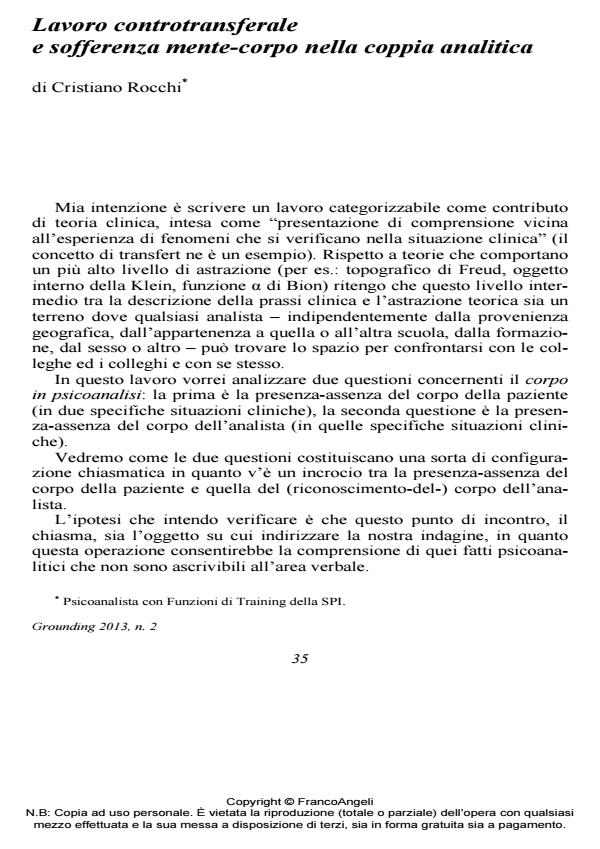Lavoro controtransferale e sofferenza mente-corpo nella coppia analitica
Journal title GROUNDING
Author/s Cristiano Rocchi
Publishing Year 2013 Issue 2013/2
Language Italian Pages 24 P. 35-58 File size 397 KB
DOI 10.3280/GRO2013-002004
DOI is like a bar code for intellectual property: to have more infomation
click here
Below, you can see the article first page
If you want to buy this article in PDF format, you can do it, following the instructions to buy download credits

FrancoAngeli is member of Publishers International Linking Association, Inc (PILA), a not-for-profit association which run the CrossRef service enabling links to and from online scholarly content.
Discussing the body in psychoanalysis therefore requires the reconsideration and possibly the reconstruction of such erroneous theoretical premises which do not acknowledge the active presence of the body in the analytic setting. In fact, it means giving body, once again, to the analyst-patient relationship, which follows the pathways of the senses, as well as verbal language.One can identify the object which to be investigated in order to reach a better understanding of the psychoanalytic facts which cannot be ascribed to verbal language, as the so calledby the A. "chiasmatic configuration: thepresence-absence of the patient’s body / acknowledgment of the analyst’s body". The analyst’s body becomes a psychoanalytical instrument, as well as his/her mind.Closely considering both theory and practice, the author revisits the clinical facts of patients F and T from a constructivist/ relational perspective which, in his opinion, seems to better acknowledge and decipher the silent relationship of the analytic couple. Once acknowledged by the analyst, his own body becomes not only a powerful tool for analyzing the therapeutic couple’s somatic and psychic experiences, but also the medium by which the patient will be able to find and get to know her/his own Body Self. From the analyst, this work requires massive countertransference skills, in order to cope with the multiple languages of perception.
Keywords: Affect, bodily manifestations, body countertransference, chiasma, self-disclosure.
Cristiano Rocchi, Lavoro controtransferale e sofferenza mente-corpo nella coppia analitica in "GROUNDING" 2/2013, pp 35-58, DOI: 10.3280/GRO2013-002004